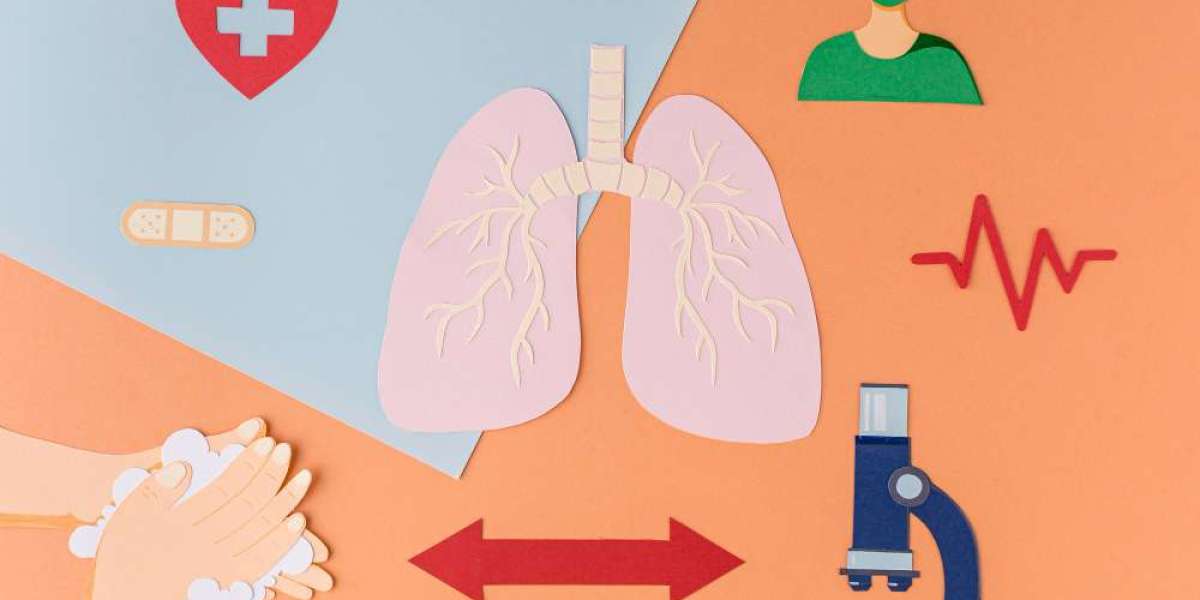Introduction
Tuberculosis (TB) continues to be one of the world's most persistent public health challenges. Despite significant advances in medicine and healthcare, the global burden of TB remains high. The global tuberculosis (TB) drugs market was estimated to be valued at USD 1.41 billion in 2023. It is projected to reach USD 2.41 billion by 2032, growing at a compound annual growth rate (CAGR) of 6.10% during the forecast period (2024–2032). This growth is driven by the increasing incidence of TB, the emergence of drug-resistant strains, and ongoing efforts to develop more effective and accessible treatments.
Market Dynamics
The TB drugs market is shaped by several key dynamics, including the rising prevalence of the disease, advancements in drug development, and government and non-governmental initiatives aimed at eradicating TB.
Rising Prevalence of Tuberculosis
The persistent prevalence of TB, particularly in low- and middle-income countries, is a major factor driving the market. According to the World Health Organization (WHO), approximately 10 million people fell ill with TB in 2021, and 1.6 million died from the disease. The high infection rates, coupled with the emergence of multi-drug-resistant (MDR) and extensively drug-resistant (XDR) TB, have necessitated the development of new and more effective treatment options.
Advancements in Drug Development
Advancements in drug development are another crucial driver of market growth. Researchers are focusing on developing new drug regimens that are shorter, more effective, and less toxic than existing therapies. These innovations are particularly important in the fight against drug-resistant TB, which requires more complex and prolonged treatment regimens. The approval of new drugs like Bedaquiline and Delamanid has provided hope for patients with drug-resistant TB, contributing to market growth.
Government and Non-Governmental Initiatives
Governments and international organizations are playing a pivotal role in driving the TB drugs market. The WHO’s "End TB Strategy," which aims to reduce TB deaths by 90% and cut new cases by 80% between 2015 and 2030, is one such initiative. Additionally, the Global Fund to Fight AIDS, Tuberculosis, and Malaria has been instrumental in funding TB treatment programs in low-income countries. These initiatives have spurred demand for TB drugs, particularly in regions with high disease burdens.
Challenges in the TB Drugs Market
Despite the positive outlook, the TB drugs market faces several challenges. The high cost of developing new drugs, regulatory hurdles, and the slow pace of approval processes can hinder market growth. Additionally, the side effects associated with TB drugs, which can include liver toxicity and neurological complications, present challenges for patient compliance and treatment success.
Access Sample Report @ https://straitsresearch.com/report/global-tuberculosis-drugs-market/request-sample
Market Segmentation
The tuberculosis drugs market can be segmented based on several factors, including drug type, disease type, and distribution channel.
By Drug Type
- First-Line Drugs: These are the initial drugs used to treat TB. They include isoniazid, rifampicin, ethambutol, and pyrazinamide. First-line drugs are typically used in combination and are effective for the majority of TB cases.
- Second-Line Drugs: These are used when TB is resistant to first-line drugs. Second-line drugs include fluoroquinolones and injectable agents like amikacin and kanamycin. They are more expensive and have more severe side effects than first-line drugs.
- Combination Drugs: Combination therapies, which include fixed-dose combinations of two or more drugs, are becoming increasingly popular as they improve patient adherence and reduce the risk of drug resistance.
By Disease Type
- Active TB: Active TB occurs when the TB bacteria multiply and cause symptoms. This is the most common form of TB and requires immediate treatment.
- Latent TB: Latent TB occurs when a person is infected with TB bacteria, but the bacteria are inactive and do not cause symptoms. People with latent TB are treated to prevent the development of active TB.
By Distribution Channel
- Hospitals: Hospitals are the primary channel for the distribution of TB drugs, especially in cases of severe and drug-resistant TB.
- Pharmacies: Pharmacies, including online pharmacies, play a significant role in the distribution of TB drugs, particularly in regions with high TB prevalence.
- Government and Non-Governmental Organizations: These organizations distribute TB drugs through public health programs, particularly in low-income countries.
Access Detailed Segmentation @ https://straitsresearch.com/report/global-tuberculosis-drugs-market/segmentation
Regional Outlook
The tuberculosis drugs market is geographically segmented into North America, Europe, Asia-Pacific, Latin America, and the Middle East & Africa.
North America
North America, particularly the United States, has a relatively low prevalence of TB. However, the region’s well-established healthcare infrastructure and ongoing research into TB treatment contribute to its significant share in the global market. The presence of major pharmaceutical companies and government initiatives aimed at eliminating TB further bolster the market in this region.
Europe
Europe has a moderate TB burden, with higher rates in Eastern Europe and Central Asia. The European market is driven by government-funded TB programs and the availability of advanced healthcare facilities. The WHO’s efforts to combat MDR-TB in the region are also driving demand for second-line TB drugs.
Asia-Pacific
The Asia-Pacific region is the largest market for TB drugs, driven by the high prevalence of the disease in countries like India, China, and Indonesia. These countries account for a significant proportion of global TB cases, making the region a focal point for TB control efforts. Government initiatives, increased healthcare spending, and international funding are key factors driving market growth in Asia-Pacific.
Latin America
Latin America has a moderate TB burden, with higher rates in countries like Brazil and Peru. The market in this region is driven by government-led TB control programs and international funding. The growing availability of advanced TB diagnostics and treatments is also contributing to market growth.
Middle East & Africa
The Middle East & Africa region has one of the highest TB burdens in the world, particularly in sub-Saharan Africa. The market in this region is primarily driven by international aid programs and government initiatives aimed at combating TB. The high prevalence of HIV, which increases the risk of developing active TB, is also driving demand for TB drugs in this region.
Buy Your Report Now @ https://straitsresearch.com/buy-now/global-tuberculosis-drugs-market
Conclusion
The global tuberculosis drugs market is poised for significant growth over the coming years, driven by the rising prevalence of the disease, advancements in drug development, and government and non-governmental initiatives. However, challenges such as high drug development costs and patient compliance issues remain. With ongoing research and development, the future of TB treatment looks promising, offering hope for millions of people affected by this deadly disease.
As the market evolves, it will be crucial for stakeholders to continue investing in innovative treatments and ensuring that TB drugs are accessible to those who need them the most. The fight against TB is far from over, but with sustained efforts, the global community can make significant strides toward eradicating this ancient scourge.








